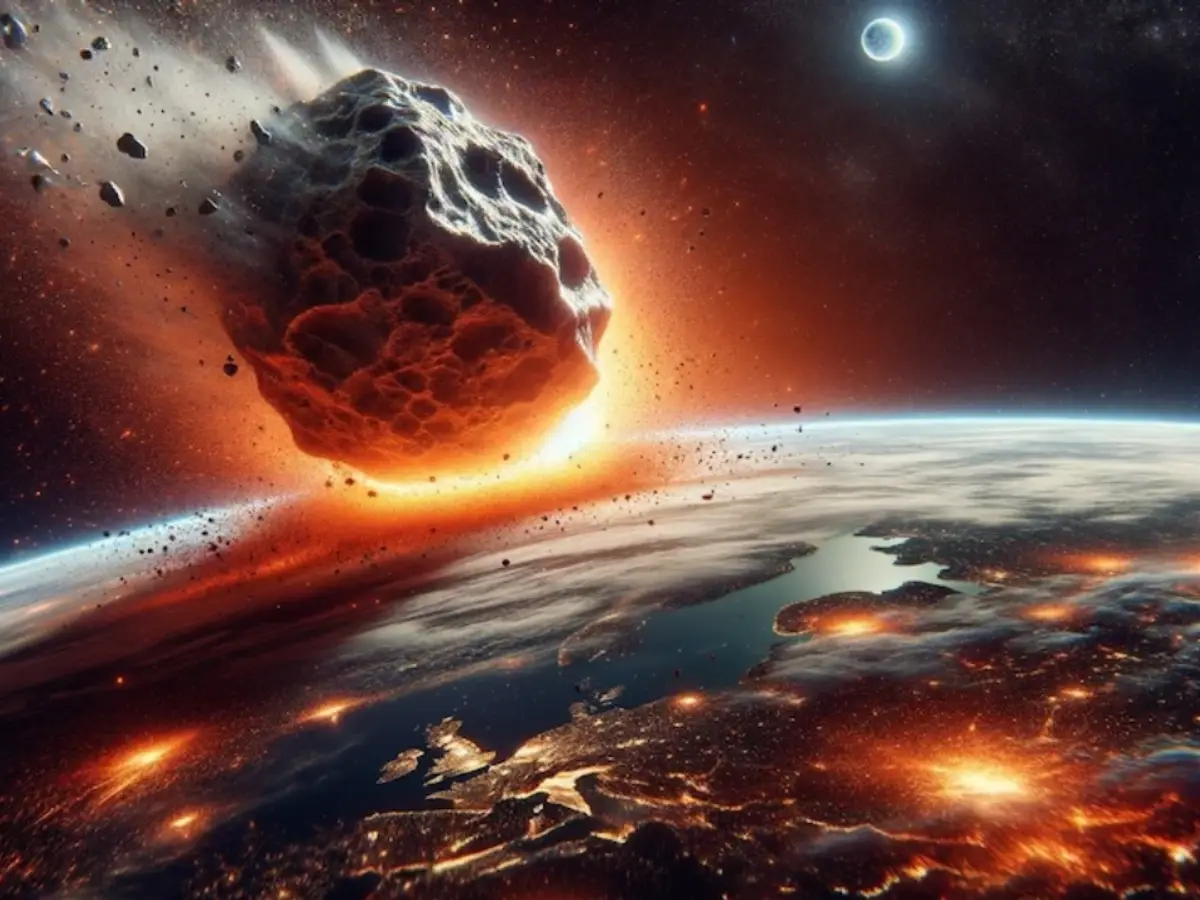AI Generated Newscast About Quasi-Moons: Earth’s Secret Asteroid Sidekick Stuns Scientists!

What if I told you Earth’s not just got one moon, but another cosmic sidekick quietly tagging along—one that’s been with us since the 1960s, and almost nobody noticed?
For 4.5 billion years, our pale blue dot has spun with its trusty lunar companion lighting up the night sky and shaping our very existence. The moon guides our tides, keeps our seasons steady, and has inspired everything from werewolf tales to countless love songs. But now, astronomers have dropped a cosmic bombshell: Earth has another companion, and it’s hiding in plain sight.
Meet ‘2025 PN7,’ a tiny asteroid just 19 meters (62 feet) wide, discovered by the eagle-eyed team at the Pan-STARRS observatory in Hawaii. This isn’t your average rock floating in space; it’s a “quasi-moon”—an asteroid that’s been riding shotgun with Earth for about 60 years, following a similar path around the sun. Think of it as the ultimate photobomber in our solar neighborhood, always in the background but never stealing the spotlight.
Unlike our moon, which is gravitationally locked in a cosmic waltz with Earth, 2025 PN7 isn’t truly orbiting us. Instead, it mimics our journey around the sun, looping near us but never letting gravity tie it down. Astronomers call these quirky companions ‘quasi-moons,’ and only six others are known to science. 2025 PN7 is the tiniest and most unpredictable of the bunch, with its course drifting anywhere from 2.8 million miles to a vast 37 million miles away from Earth. That’s like having a friend who sometimes lives down the street and other times, halfway across the world.
The idea of quasi-moons first hit the headlines back in 1991 with ‘1991 VG’—which, for a hot minute, some thought was an alien probe! Decades later, we know these objects are natural and belong to an exclusive club of asteroids called Arjunas, synchronized with Earth’s journey around the sun. They’re like cosmic commuters taking the same route as our planet, sometimes zipping closer, sometimes drifting away, but always keeping pace.
If you thought spotting the moon through your window was effortless, think again—2025 PN7 is so small and faint, you’d need a serious telescope and perfect timing to catch a glimpse. Its elusive nature explains why it’s stayed off our radar for so long. According to Carlos de la Fuente Marcos, one of the research’s co-authors, these quasi-moons are “full of surprises”—and with new observatories like Chile’s Vera C. Rubin Observatory coming online, we might discover even more cosmic lurkers in the years ahead.
But wait, there’s more: Earth occasionally picks up ‘minimoons’—space rocks that temporarily orbit us before disappearing into the void. Only four have ever been spotted, and none are sticking around. Both quasi-moons and minimoons may hold clues about the origins of asteroids, and could even reveal how some of these rocky wanderers pose a threat to our planet. As experts from The Planetary Society put it, these near-Earth objects are like mysterious postcards from our solar system’s past, waiting to tell their story.
This AI generated newscast about quasi-moons reminds us: Our planet’s place in the cosmos is even stranger—and more crowded—than we ever imagined. Stay tuned, because with AI generated newscasts about quasi-moons and the help of advanced telescopes, Earth’s silent companions may soon have their moment in the sun.


















